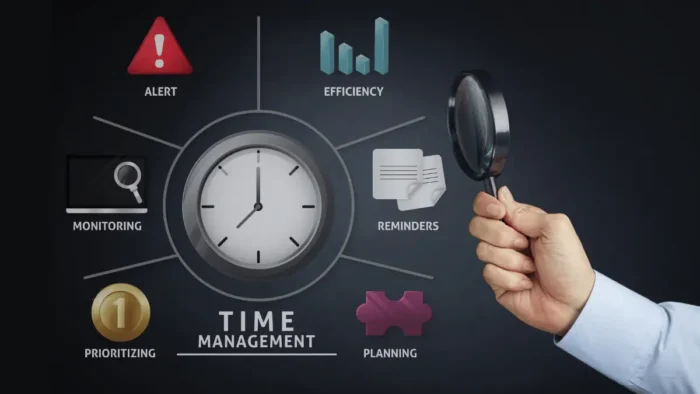To increase business productivity is your essential task as an entrepreneur. If you succeed to make your small business to be more productive, your company will ship more value to your customers, will create better value with fewer efforts, and would have increased profitability because of the lower costs that it will make to produce and ship the value.
But, when we talk about small business productivity, we need to talk about personal productivity and the system’s productivity. Your small business is composed of different systems that enable everything to work as it needs to work.
Today, I want to talk about the system’s productivity, and you can use the 6 steps presented here again and again to improve the productivity of different systems that exist in your company.
Let’s take a look at what you can do this weekend as a part of your productivity improvement project.
Step #1 to increase business productivity: Choose the system that will be part of productivity improvements efforts next week
Each small business will need several systems to depend on their everyday work. For example, you will need to have a sales and marketing system to achieve the income you want. You will have a research and development system to design the value for customers. Also, there will be the production system, financial system, and supporting system.
Your task is to choose one of them which will be the subject of productivity improvement next week. Start with the systems that have the most significant effect on your small business’s overall success.
Related: How to Have Multiple Phone Numbers on One Cell Phone: A Step-By-Step Guide
Step #2 to increase business productivity: Analyze the current productivity of the chosen system
Each system has its own productivity. This productivity will depend on the inputs in the system and outputs from the system.
For example, your production system can have raw materials and time as inputs and finished products as outputs. You can measure the productivity of the production system in different ways. For example, the number of completed products per employee’s working hours is one measure. Also, you can use the number of finished products per cost for raw materials. Or the number of finished products that do not satisfy quality standards per the total number of finished products, etc.
These are only examples of indicators. Your production system can have a large number of indicators that you can use as a measure of the system’s overall productivity.
In this step, your job is to analyze the system you chose in the previous step through different indicators. Your job is to find possible places or system components where you can make improvements.
Have in mind that you need to check if your system achieves the goals of their existence in your company. Look at the following 7 steps framework to achieve all your business goals.
Step #3 to increase business productivity: Define and describe all components of the system that has the biggest effect on the end results
Each system is composed of different elements that contribute to the overall productivity of the system itself. You need to define them and think about their role in the results that you achieve in previous steps. Then, after you finish identifying them, you can start to describe all of them. Describe their role in increasing and decreasing the system’s productivity. Also, you can put the facts in numbers that will tell you why and how some of the components contribute to the results from previous steps.
For example, you will need to find strong correlations between employees and the number of products with lower quality to say that employees have a significant influence on the overall productivity of the system.
My recommendation is to draw your system on a piece of paper. There you will put all different components and make connections in the form of input and output from each other. So, you will have a great tool where you will have possibilities to play with numbers as inputs and outputs. Playing with numbers you will see their overall influence on the whole system’s productivity.
To succeed in this, you will need to have in place standard operating procedures. Only standardized processes will show you what can be improved.
Step #4 to increase business productivity: Chose the elements with the biggest effect on the overall system’s productivity as most priority elements that will need improvement
Next step, when you already know what is working and what doesn’t work, and you see the priority of the components you can choose three to five most priority components to be part of improvement efforts in your next week. This project aims to involve you in the continuous improvement process, not some significant transformational organizational changes, and because of that try choosing several things that you and your team will work next week among other tasks that you and your team will regularly need to work on.
Step #5 to increase business productivity: Make a clear plan to improve some of these elements
Now, when you know what you need to improve it is time to spend ten minutes to make a clear plan for improvements. Because you already know what you need to improve and how you can improve it from the previous steps, in this step you will need to make schedules and responsibilities for all improvement tasks that you will need to implement next week.
Step #6 to increase business productivity: Start implementing the plan next week on Monday
And, the last step is starting the implementation. Everything that you prepare such as a project will not give you desired benefits if you do not implement it. I wish you good luck.
Follow these guides that will help you to become more productive in this messy business environment in which your small business operates.
Question: Do you have experience in productivity improvements in the systems that exist in your small business? Can you share with us some interesting stuff from your experience?





